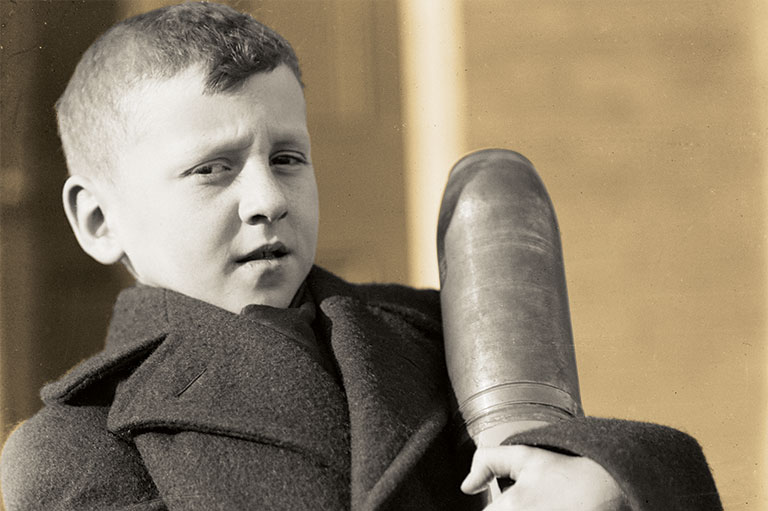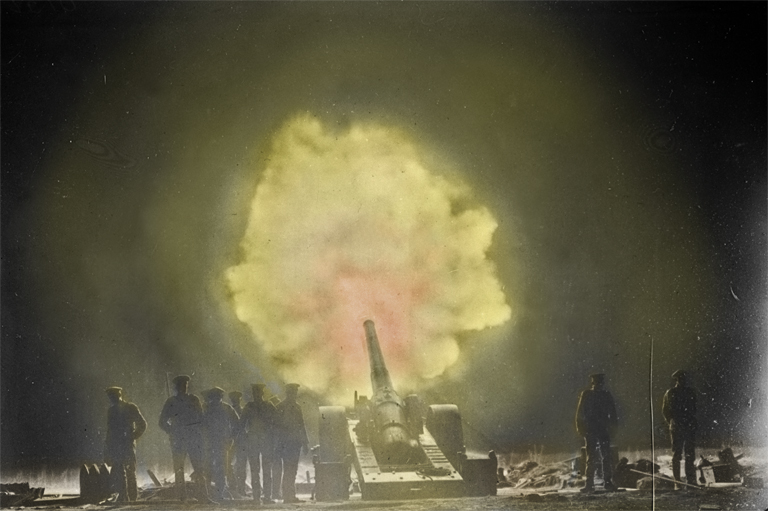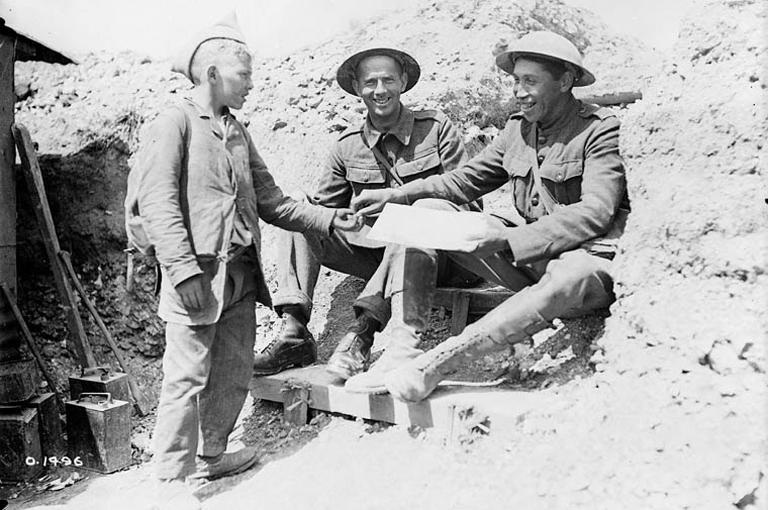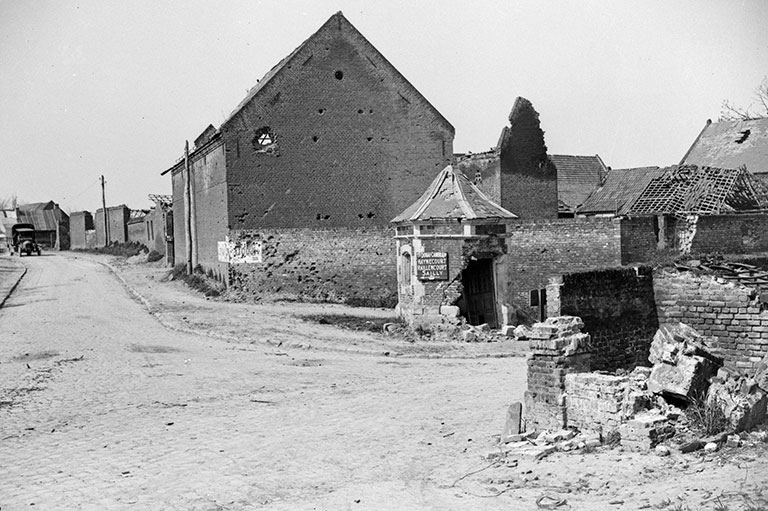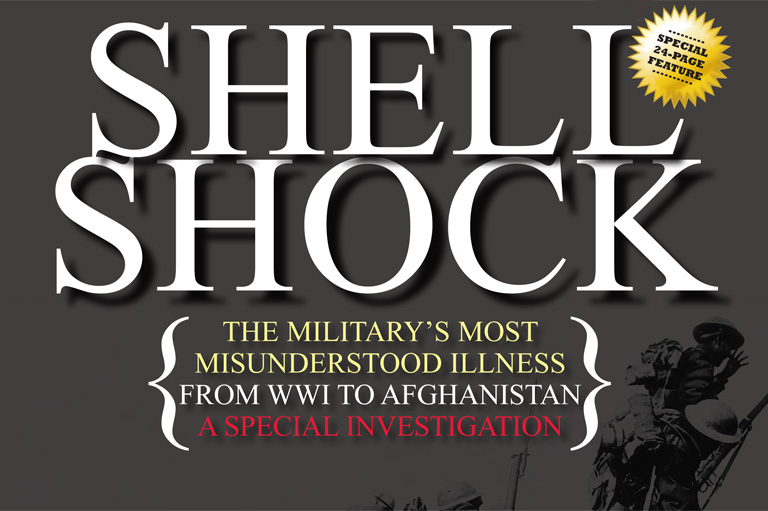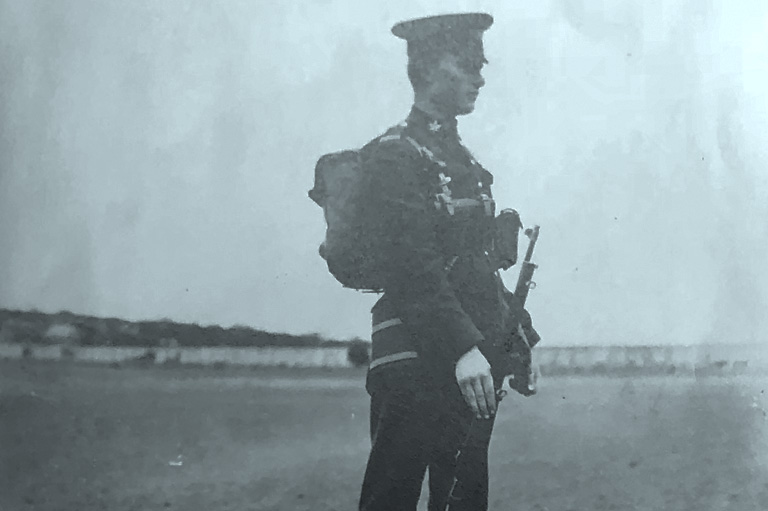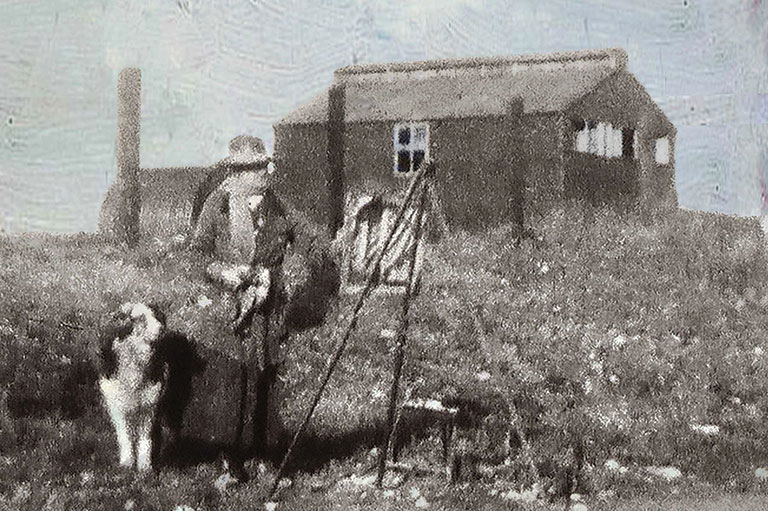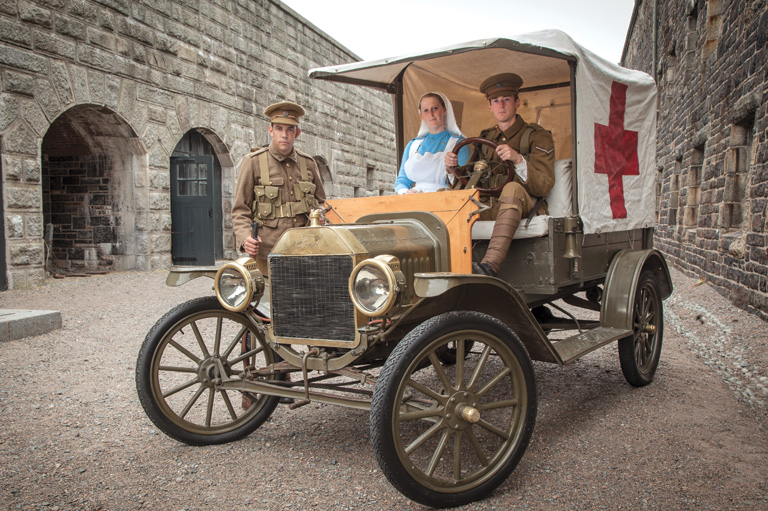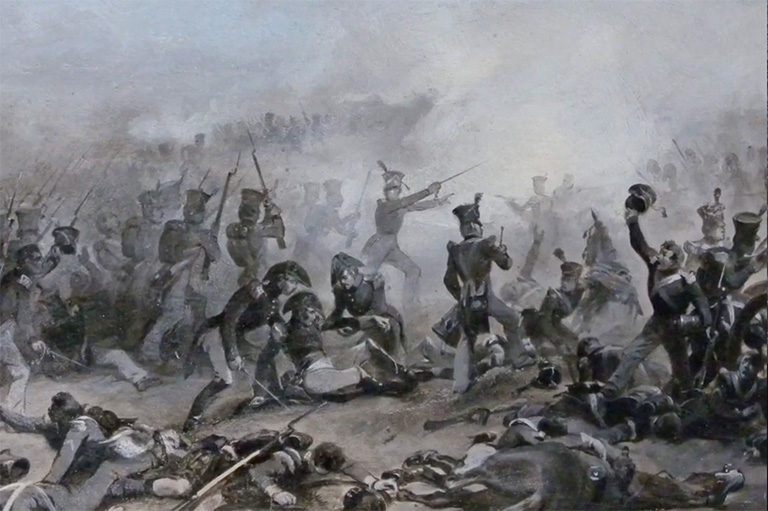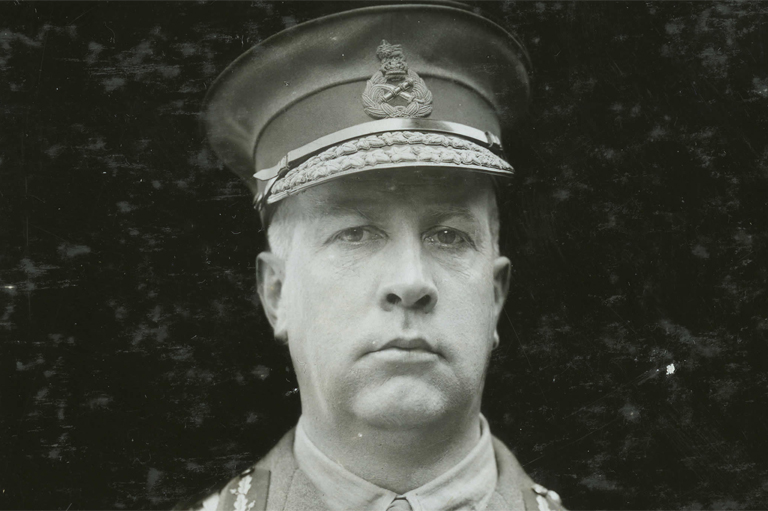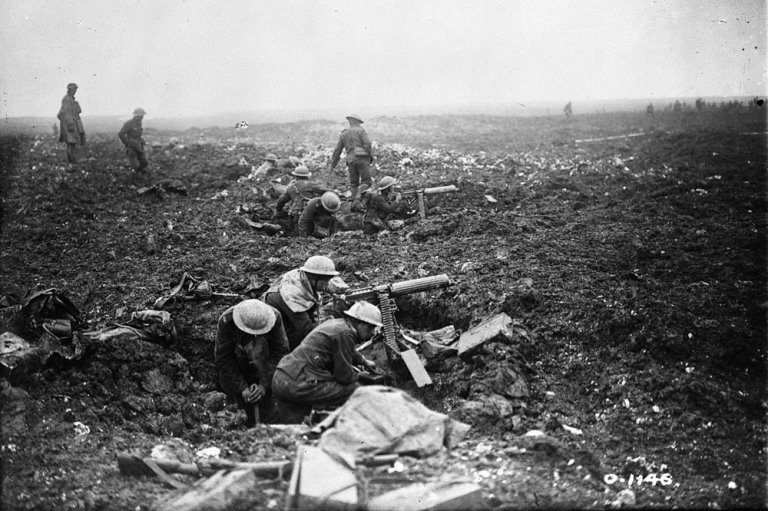War of Words
-
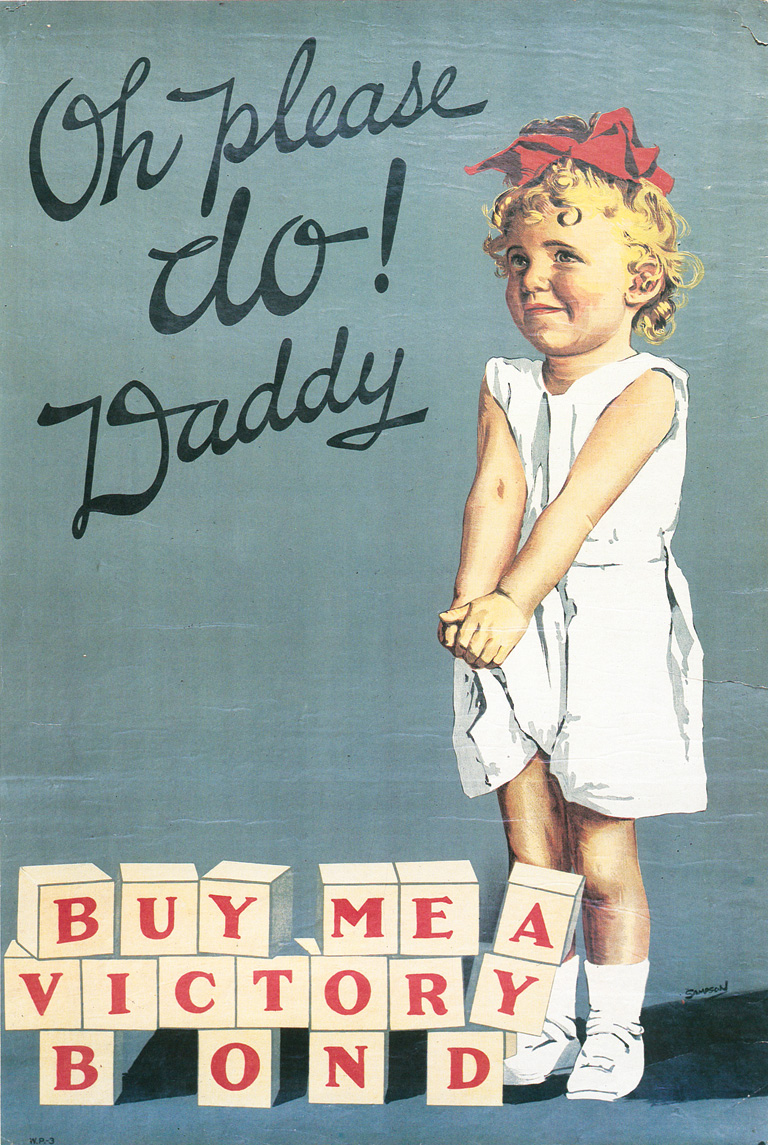 Parents are urged to invest in Victory Bonds. Poster depicts child saying "Oh please do Daddy! Buy Me a Victory Bond."Library and Archives Canada
Parents are urged to invest in Victory Bonds. Poster depicts child saying "Oh please do Daddy! Buy Me a Victory Bond."Library and Archives Canada -
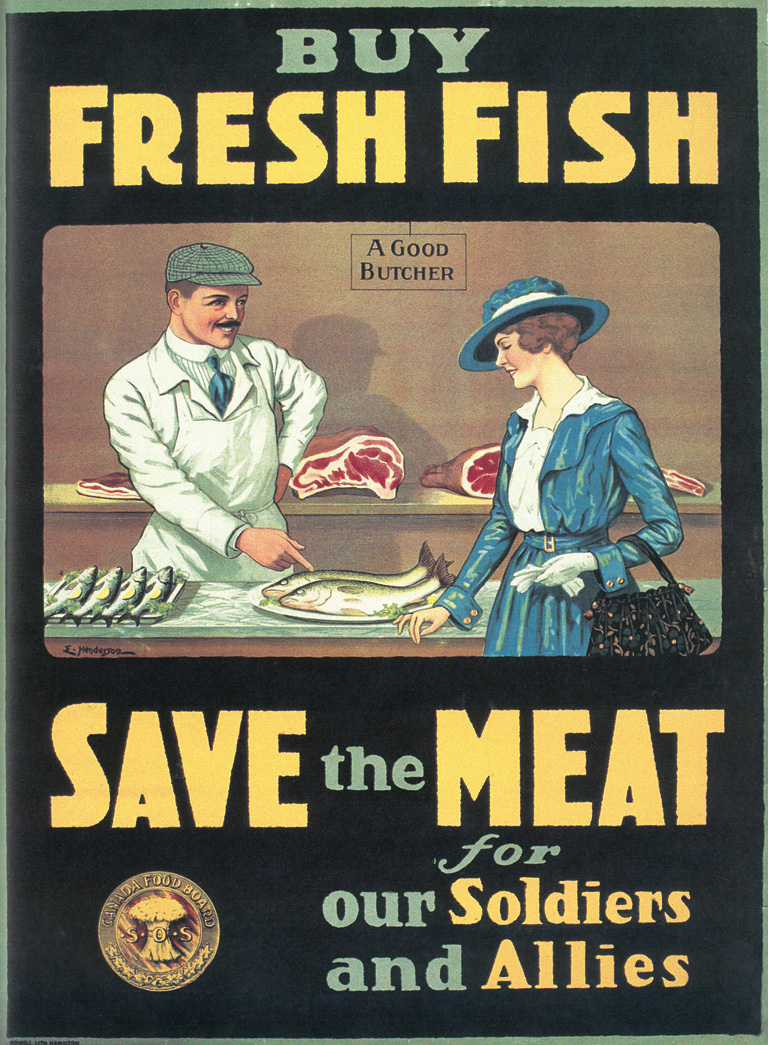 "Buy Fresh Fish, Save the Meat for our Soldiers and Allies."Library and Archives Canada
"Buy Fresh Fish, Save the Meat for our Soldiers and Allies."Library and Archives Canada -
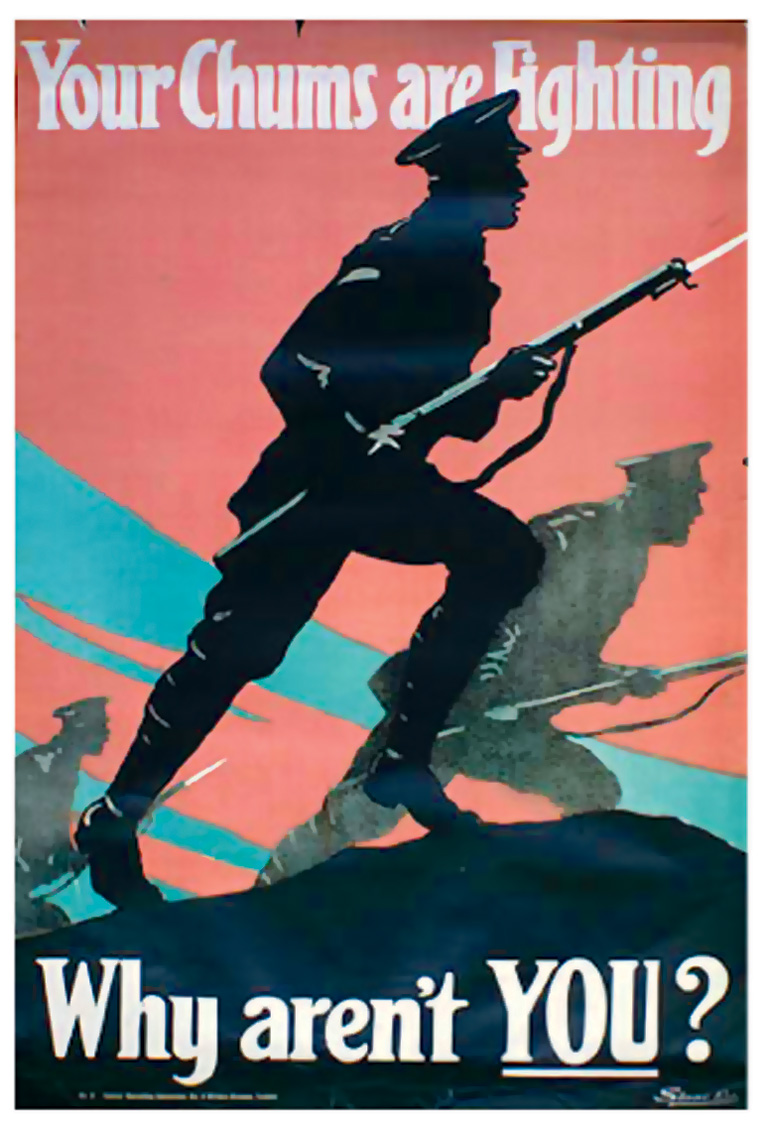 Men are asked to enlist out of a sense of friendship with those who are already serving: "Your Chums are Fighting, Why Aren't YOU?"Library and Archives Canada
Men are asked to enlist out of a sense of friendship with those who are already serving: "Your Chums are Fighting, Why Aren't YOU?"Library and Archives Canada -
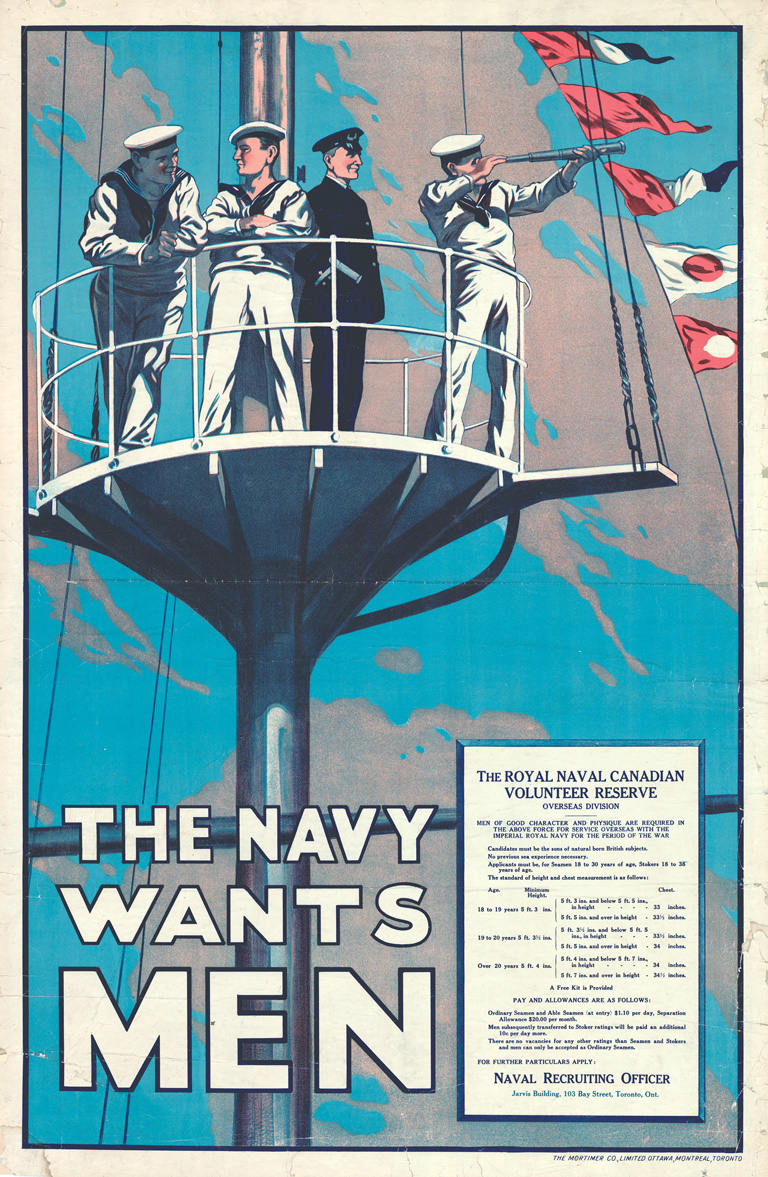 A Navy recruitment poster: "The Navy Wants Men."Library and Archives Canada
A Navy recruitment poster: "The Navy Wants Men."Library and Archives Canada -
 Poster depicts a cargo ship: "Our Export Trade is Vital. Buy Victory Bonds."Library and Archives Canada
Poster depicts a cargo ship: "Our Export Trade is Vital. Buy Victory Bonds."Library and Archives Canada -
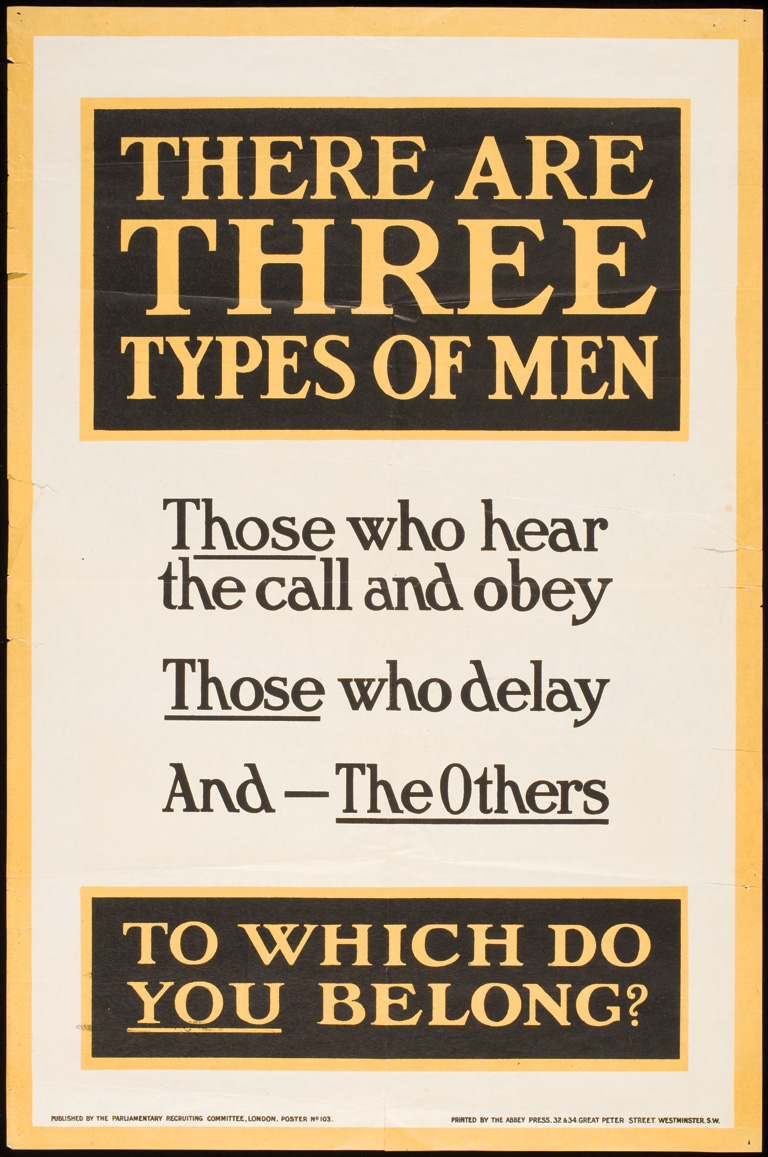 This poster attempts to shame men: "There are Three Types of Men. Those who hear the call and obey, those who delay, and -- the Others. To which do you belong?"Library and Archives Canada
This poster attempts to shame men: "There are Three Types of Men. Those who hear the call and obey, those who delay, and -- the Others. To which do you belong?"Library and Archives Canada -
 A French-language poster urges French Canadians to buy victory bonds.Library and Archives Canada
A French-language poster urges French Canadians to buy victory bonds.Library and Archives Canada -
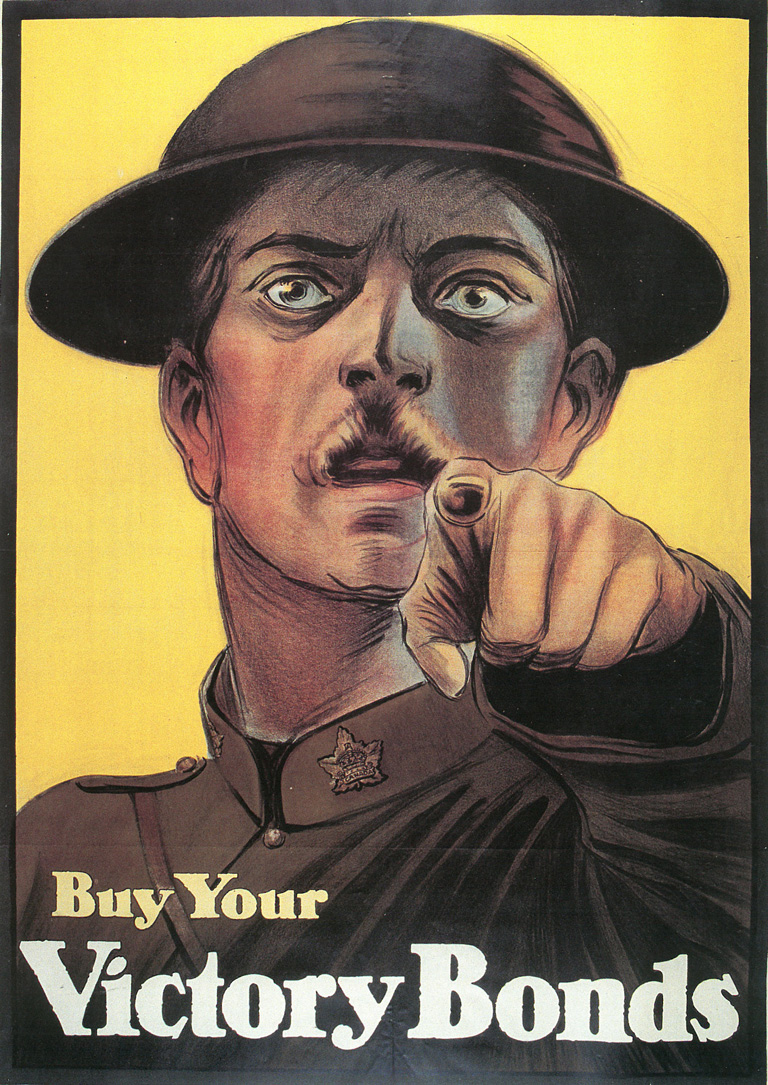 "Buy Your Victory Bonds."Library and Archives Canada
"Buy Your Victory Bonds."Library and Archives Canada
“Send more men.” “Back him up.” “This is your flag. Fight for it.”
Over a century ago, posters with these messages plastered the streets of Canadian towns and cities, rallying support for the war effort.
During the First World War, propaganda was an effective tool to inspire, inform, and persuade the public. Canadian posters were mostly text-based with simple images. They provided clear and direct messages, whether it be to purchase victory bonds, ration food, or join your local battalion.
For the first two years of the war, the Canadian military consisted entirely of volunteers. Evoking feelings of pride and honour, propaganda posters encouraged young men to enlist, suggesting that it was their duty to do so.
Some posters cited specific battles where Canadians were recognized for their bravery, such as St. Julien (Ypres) and Festubert, as a way of boosting morale. Since recruitment was carried out locally, propaganda was often personalized. Posters targeted specific groups, such as French Canadians and Irish Canadians, by including recognizable imagery, references, and slogans.
As the war dragged on, enlistment waned. Propaganda posters became increasingly important to try to fill this gap. Earlier in the war, posters were more enthusiastic in tone. Now they displayed a sense of urgency. Featuring images of exploding shells, trenches, and wounded soldiers, it was clear that the situation was grave.
Propaganda also became more aggressive. Political cartoons, posters, and editorials questioned men’s loyalty and masculinity. Those who refused to volunteer were labelled shirkers and described as cowards and weak. Propaganda posters also urged women to use their influence to sway men into enlisting. Some women even handed out white feathers, a symbol of cowardice, to shame men into service.
Despite the massive propaganda effort, by 1917, the Canadian government was forced to enact conscription to fill the ranks.
With 7 uniquely curated newsletters to choose from, we have something for everyone.
We hope you’ll help us continue to share fascinating stories about Canada’s past by making a donation to Canada’s History Society today.
We highlight our nation’s diverse past by telling stories that illuminate the people, places, and events that unite us as Canadians, and by making those stories accessible to everyone through our free online content.
We are a registered charity that depends on contributions from readers like you to share inspiring and informative stories with students and citizens of all ages — award-winning stories written by Canada’s top historians, authors, journalists, and history enthusiasts.
Any amount helps, or better yet, start a monthly donation today. Your support makes all the difference. Thank you!
Themes associated with this article
Advertisement
1914-1918: The War Ends
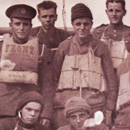
The war that changed Canada forever is reflected here in words and pictures.

